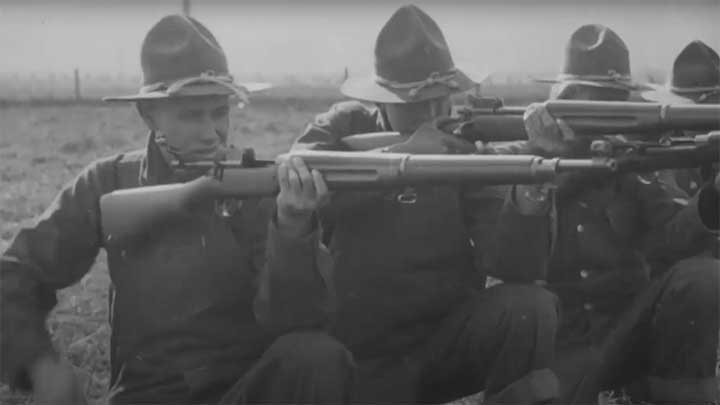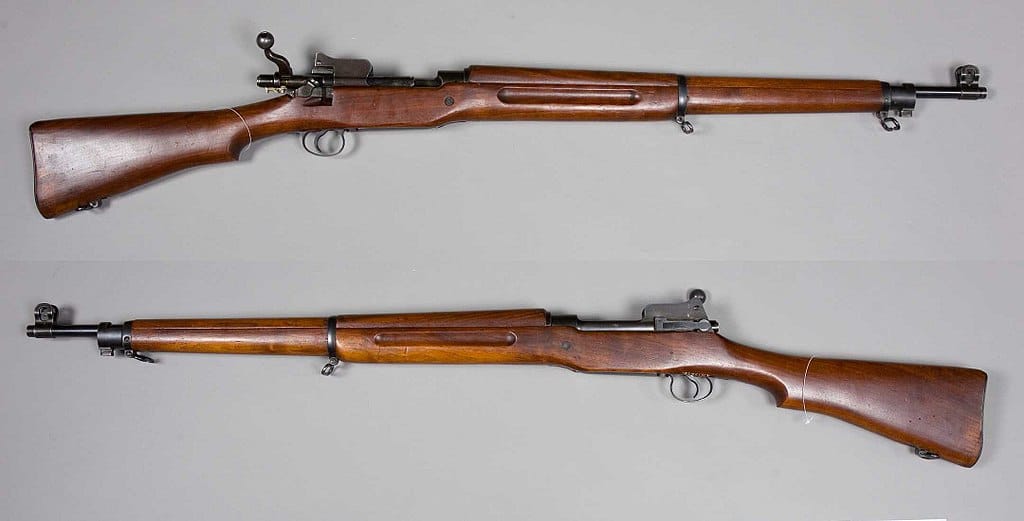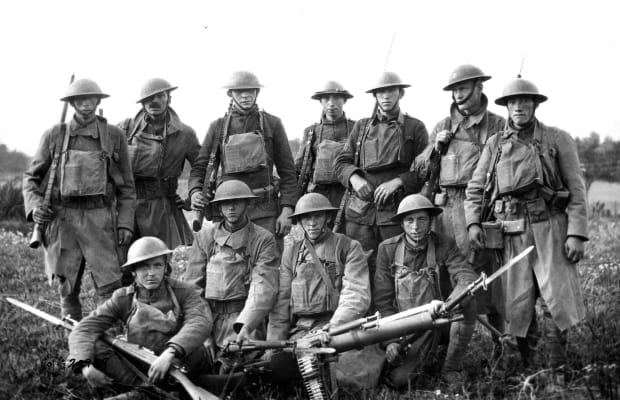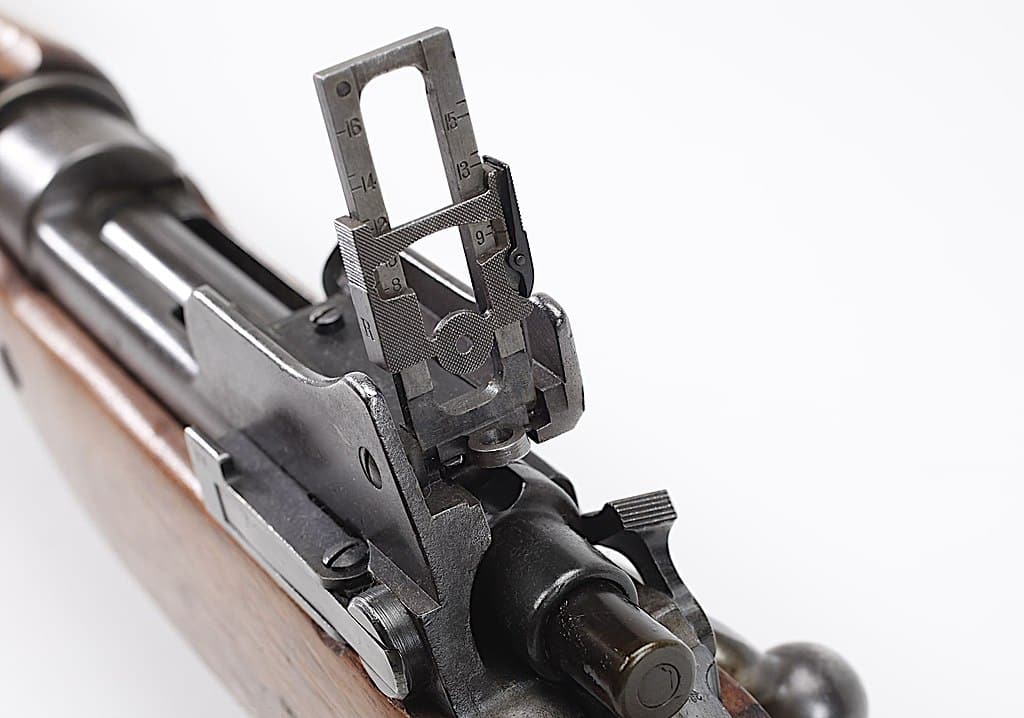
The intricacies of World War 1 small arms fill books due to the rapid advancement of technology and how warfare changed in a few short years. It’s easy to get wrapped up in calibers, firearm models, bayonets, and actions as you pour over the history of the world’s first Great War. As such, sometimes things get forgotten and the world finds itself in need of a reminder. If I asked you what rifle the American forces used in World War 1, for instance, you’d likely say the Springfield 1903. You’d be partially right, but only about 25% or so. The M1917 Enfield actually did most of the fighting.
The Springfield 1903 certainly served overseas, and if you asked video games and movies, then you’d be led to believe it was the only American service rifle fighting that war. The Springfield name is absolutely legendary, and at the time, the Springfield 1903 was the official service rifle of the United States. Yet, 75% of American troops carried the Enfield M1917, and only the paltry remainder actually carried the Springfield rifle.

This includes Medal of Honor recipient Alvin York who silenced machine gun after machine gun with his M1917 and M1911 pistol. However, if you watch the Gary Cooper rendition, he wields a Springfield M1903. If the Springfield 1903 was the American service rifle of the time, then you might be asking: why did the M1917 Enfield arm the whopping majority of American troops?
Well, my dear reader, it’s simple logistics.
The M1917 Enfield and A Tale of Victory
You see, Americans are typically a little late to World Wars. However, we often help our allies in some big ways once we show up. The Brits had recently changed rifles and calibers, and when World War 1 came around, they were in need of rifles… but they clung to an old caliber to simplify logistics. They couldn’t build their P14 rifles quick enough to meet their needs, so they contracted with American weapon manufacturers to produce more.

American factories were spitting out P14 rifles left and right, chambered in the old .303 British. This helped the British forces greatly, but by the time America got involved in the war, they had the exact same problems the Brits had. There weren’t enough rifles to go around. Specifically, not enough Springfield M1903 rifles.
So, they looked at the factories building Enfield rifles and planned to retool them to make America’s Springfields instead. Then someone had a much better idea. Let’s just make P14s for American forces.
It would be much faster to produce Enfields for America than to retool the factories for Springfield rifles. They would be chambered, however, in the American 30-06 U.S. Service cartridge and were modified as such to accommodate the round. Luckily since the original rifle was itself designed for a powerful new British round, it accommodated the American 30-06 just as easily. Thus the M1917 Enfield was born.

American forces eliminated the volley sights and added a 16.5-inch bayonet to the end. The Enfield M1917 would quickly deploy with American Expeditionary Forces and fight in the fiercest battles of World War One.
Inside the M1917 Enfield
M1917 Enfields were very robust guns. While many of us may think of bolt action rifles as light hunting rifles, these guns were from that. They weighed nearly 10 pounds, featured 26-inch barrels, and an overall length of 46.3 inches.
The M1917 Enfield held five rounds of .30-06 and could be loaded via individual rounds or through stripper clips. Stripper clips allow for rapid reloads via simple disposable clips that hold five rounds by their rim.

Soldiers aligned the stripper clip with the integral magazine of the weapon and pressed downward, loading the magazine rapidly and allowing the soldier to jump right back into the fight. It may sound slow by today’s standards, but it was pretty quick in its day.
The bolt throw and movement on the M1917 Enfield were rapid and smooth. Enough so that the Enfield rifles gained a reputation for having a faster firing rate than the Springfield rifles. At close range, a faster firing rate is quite valuable (as was the 16.5-inch long sword bayonet).
Accuracy In Combat
Americans and Western European forces placed a good amount of value on accuracy in their rifles, and that’s apparent in the M1917. It wore a peep sight that was suited for long-distance engagements. In that role, the sight allows a soldier to carefully aim and take a precise shot. That’s great on an open battlefield, but sucked for close-range fighting in the trenches.
The peep sight allowed the M1917 to be more accurate than the M1903 in the early days, but later models of M1903 incorporated them as well. However, the M1903 sights of World War 1 weren’t incredibly effective. They were too far from the eye, and the front sight was thin and hard to see. It also broke quite often.

Accuracy with the M1917 was top-notch, and with iron sights, an average shooter could produce three-inch groups at 100 yards. You take a skilled shooter like Alvin York, and you could be a real menace to the enemy with this rifle.
They were accurate enough that the military converted a number of them to sniper rifles with fixed power magnification optics. These rifles were equipped with Winchester A5 scopes which granted the user a fixed five-power magnification that greatly increased their ability to hit targets at long ranges.
The End of the Line
After World War 1 ended, the M1903 went back to being the bell of the ball, though the M1917 stuck around for a while. They were sent overseas and kept in reserves, and later when World War 2 broke out, they were distributed as Lend-Lease rifles. Soldiers in mortar and artillery units carried them into the next Great War until the M1 Garand shortage was over. The M1917 Enfield was a fantastic rifle, and it’s a shame it doesn’t get the respect it deserves.
Hopefully, we’ve helped spread the glory of the M1917 Enfield and the difference it made in the trenches, in Belleau Wood, in Cantigny, and beyond.
